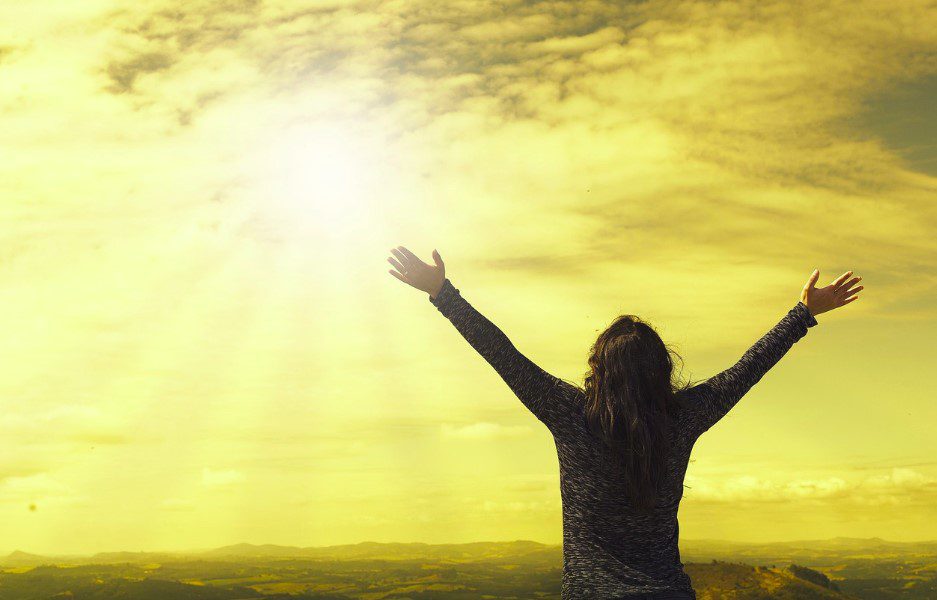Vitamin D is one of the most important nutrients for children and adults, and sadly, a fact that goes unnoticed all the time. This remarkable nutrient holds the key to strong bones, a robust immune system, and cognitive development.
Today, where children are often consumed by screens and sedentary activities indoors, there is always a challenge that they receive little or no vitamin D. Low production of vitamin D can lead to numerous health challenges, ranging from impaired immune system to dental problems.
In this comprehensive article, we discuss its sources, recommended intake, and why it holds the key to a healthy body.
Exactly What is Vitamin D?

Vitamin D, often referred to as the “sunshine vitamin,” is a unique and essential nutrient that the human body produces in response to sunlight exposure. It belongs to the family of fat-soluble vitamins and exists in several forms. The most important being vitamin D2 (ergocalciferol) and vitamin D3 (cholecalciferol).
Vitamin D2 is primarily found in plant-based sources, such as mushrooms exposed to ultraviolet (UV) light. On the other hand, Vitamin D3 is synthesized in the skin during exposure to sunlight. It is also found in certain animal-based foods, like fatty fish, egg yolks, and liver.
Vitamin D helps the body absorb calcium and phosphorus, which are needed to build and maintain strong bones and teeth. It is also important for many other bodily functions.
What are the Benefits of Vitamin D?

Vitamin D is a fat-soluble nutrient that is naturally synthesized in the body when the skin is exposed to sunlight. This essential vitamin offers a multitude of benefits for children, including:
1. Bone Health and Growth
One of the primary functions of vitamin D in child health is to support bone health and growth. It aids in the absorption of calcium and phosphorus from the diet. Both are crucial minerals for the development of strong and healthy bones. Inadequate levels of vitamin D can make children susceptible to conditions like ricket; a disease characterized by skeletal deformities.
2. Immune System Support
Vitamin D plays a crucial role in supporting the immune system, acting as a powerful defense against infections and diseases. It enhances the production and activity of immune cells, helping the body fight off harmful pathogens. Adequate levels of vitamin D in children have been associated with a reduced risk of respiratory tract infections, such as the common cold and flu.
3. Cognitive Development
Emerging research suggests a link between vitamin D and cognitive development in children. Studies have shown that optimal vitamin D levels may contribute to improved cognitive function, memory, and overall brain health. Adequate vitamin D intake during critical periods of brain development is believed to have long-term benefits for cognitive abilities and academic performance.
4. Mood and Mental Well-being
Beyond its role in physical health, vitamin D also influences mental well-being in children. Research has indicated a potential association between low vitamin D levels and an increased risk of mood disorders, such as depression and anxiety. Adequate vitamin D intake may contribute to improved mood regulation and overall mental health.
5. Reduced Risk of Chronic Diseases:
Studies have shown that optimal vitamin D levels may help reduce the risk of chronic diseases later in life. These include cardiovascular diseases, autoimmune disorders, and certain types of cancer.
What are the Symptoms of Vitamin D Defficiency?

Vitamin D deficiency in children can have various signs and symptoms. Some common signs to look out for include:
- Delayed or impaired growth: Children with vitamin D deficiency may experience slower growth or delays in reaching developmental milestones.
- Bone and muscle weakness: Vitamin D plays a crucial role in the absorption of calcium, which is essential for bone health. Deficiency can lead to weak bones, skeletal deformities (such as bowed legs), and muscle weakness.
- Dental problems: Insufficient vitamin D levels can contribute to dental issues, including delayed tooth eruption and increased risk of cavities.
- Frequent infections: Vitamin D is involved in the immune system’s functioning, and low levels can weaken the body’s defense against infections. Children with a deficiency may experience more frequent respiratory tract infections and other illnesses.
- Fatigue and irritability: Children lacking vitamin D may feel tired and fatigued more easily. They may also exhibit increased irritability or mood swings.
- Difficulty concentrating: Some studies have suggested a link between vitamin D deficiency and difficulties with concentration and cognitive function in children.
- Rickets: Severe and prolonged vitamin D deficiency can lead to a condition called rickets. It is characterized by weakened and softened bones, resulting in skeletal deformities, bowed legs, and delayed motor skills development.
It’s important to note that these signs and symptoms can vary among individuals, and some children may not exhibit any noticeable symptoms despite having a deficiency. If you want to be sure, it is best to consult a healthcare professional for evaluation and appropriate management.
The Complete Relationship Between the Sun and Vitamin D

The sun takes center stage as nature’s primary source of vitamin D. When sunlight touches the skin, a marvelous transformation occurs. Our bodies undergo a complex process that converts a precursor compound into the active form of vitamin D.
For children, exposure to sunlight is a crucial component in maintaining adequate levels of this essential nutrient.
1. Sunlight and Vitamin D Synthesis
The skin contains a substance called 7-dehydrocholesterol, which serves as a precursor to vitamin D. When exposed to ultraviolet B (UVB) radiation present in sunlight, a chemical reaction takes place, converting this precursor into vitamin D3.
This form of vitamin D then undergoes further conversion in the liver and kidneys to become the biologically active compound that supports various bodily functions.
2. Factors Affecting Vitamin D Synthesis
Several factors influence the production of vitamin D from sunlight exposure. These factors include:
– Geographical Location: The amount of sunlight and the angle at which it reaches the earth vary depending on the geographical location. Children living closer to the equator generally have more opportunities for vitamin D synthesis throughout the year compared to those in regions farther from the equator.
– Time of Day: The sun’s intensity and UVB radiation levels are highest during midday when the sun is at its peak. This means that a shorter exposure time is needed to generate adequate vitamin D compared to early morning or late afternoon.
– Seasonal Variation: Sunlight exposure and vitamin D synthesis may be influenced by seasonal variations. In regions with distinct seasons, vitamin D production tends to be highest during the summer months when there is more sunlight available.
3. How Many Minutes of Exposure is Good Enough?
The amount of time needed for both children and adults can vary depending on several factors. These include the time of year, geographical location, time of day, amount of exposed skin, and the individual’s skin pigmentation.
Additionally, it’s important to note that excessive sun exposure can increase the risk of skin damage and potential health issues, so it’s recommended to take precautions.
As a general guideline, it is often suggested that individuals expose their face, arms, and legs to direct sunlight for about 10 to 30 minutes, two to three times a week. During this time, the sun’s rays help the body produce vitamin D.
However, it’s important to consider the factors mentioned earlier, such as geographical location and time of year, as these can influence the intensity of the sunlight and the production of vitamin D.
It is advisable to consult with a healthcare professional or dermatologist for personalized recommendations based on your specific circumstances, such as your age, health condition, and geographical location.
They can provide more accurate guidance on the appropriate duration of sun exposure to meet your individual vitamin D needs while considering the potential risks associated with excessive sun exposure.
4. The Importance of Balancing Sun Exposure and Sun Protection
While sunlight is essential for vitamin D synthesis, it’s crucial to strike a balance between sun exposure and sun protection measures.
Overexposure to sunlight can lead to sunburn and increase the risk of skin damage and skin cancer, especially in children with sensitive skin.
Here are some recommendations to ensure a safe balance:
– Limit Sun Exposure: Aim for moderate sun exposure without risking sunburn. Spending 15 to 30 minutes outdoors, a few times a week, with the face, arms, and legs exposed to sunlight, can help maintain adequate vitamin D levels.
– Sun Protection Measures(SPF): When the sun is intense, especially during midday, encourage children to wear protective clothing, including hats, sunglasses, and lightweight, long-sleeved clothing. Apply a broad-spectrum sunscreen with a minimum SPF of 30 to exposed areas, ensuring it is safe for children and reapplied as directed.
Beyond the Sun – the Alternative Sources of Vitamin D:

While sunlight remains the most abundant natural source of vitamin D, it is not the only way to obtain this essential nutrient. There are alternative sources:
1. Dietary Sources of Vitamin D
Certain foods contain vitamin D naturally or are fortified with this nutrient. Including these foods in a child’s diet can help supplement their vitamin D intake.
Here are some dietary sources of vitamin D:
– Fatty Fish: Fatty fish like salmon, mackerel, and sardines are excellent sources of vitamin D. These fish are not only rich in omega-3 fatty acids but also provide a significant amount of vitamin D to support child health.
– Fortified Dairy Products: Many dairy products, such as milk and yogurt, are often fortified with vitamin D. Checking product labels can help identify options that provide additional vitamin D.
– Eggs: Eggs, particularly the yolks, contain small amounts of vitamin D. Including eggs in a child’s diet can contribute to their overall vitamin D intake.
– Mushrooms: Certain types of mushrooms, such as shiitake and maitake mushrooms, contain vitamin D. While the levels may vary, incorporating mushrooms into meals can offer a natural source of this nutrient.
– Fortified Cereals and Juices: Some cereals and fruit juices are fortified with vitamin D. These products can be an easy and convenient way to increase vitamin D intake, especially for picky eaters.
2. Vitamin D Supplements
In cases where sunlight exposure and dietary sources are insufficient, healthcare professionals may recommend vitamin D supplements for children.
These supplements come in various forms, such as tablets, capsules, or liquid drops, and are available over-the-counter or with a prescription. It is important to follow healthcare professionals’ guidance regarding dosage and duration to ensure safe and effective supplementation.
Consulting with Healthcare Professionals:
Determining the appropriate sources and intake of vitamin D for children can vary based on individual needs and circumstances. Pediatricians or registered dietitians, can provide personalized guidance and recommendations tailored to a child’s specific requirements.
What is the Recommended Intake of Vitamin D for Children?

The recommended intake of vitamin D for children varies depending on their age and specific health needs. It is important to note that these guidelines may be subject to updates based on the latest research and recommendations from healthcare authorities.
As a rough estimate, it is believed that approximately 10 to 30 minutes of unprotected sun exposure to a large portion of the body (such as the arms, legs, and back) can help produce around 400 IU of vitamin D. This estimation may not be accurate for everyone, as individual factors can influence the synthesis of vitamin D in the body. Factors such as skin pigmentation, age, latitude, altitude, and atmospheric conditions can affect the skin’s ability to produce vitamin D from sunlight. Furthermore, it’s crucial to balance sun exposure with sun safety precautions to avoid overexposure and the potential risk of skin damage or sunburn. It is recommended to consult with a healthcare professional for personalized advice based on your specific needs, health conditions, and geographical location to determine the optimal amount of sun exposure or the appropriate dosage of vitamin D supplementation for your child.
Here are the current general guidelines for vitamin D intake:
1. Infants
For infants (0 – 12 months), the American Academy of Pediatrics (AAP) recommends a daily vitamin D supplement of 400 international units (IU). Breastfed infants may be at a higher risk of vitamin D deficiency, as breast milk does not naturally provide sufficient levels of this nutrient.
The vitamin D supplement helps ensure that infants receive the necessary amount for healthy growth and development.
2. Children and Adolescents
For children and adolescents aged 1 to 18 years, the recommended daily intake of vitamin D varies slightly. The recommended amount of vitamin D for this age group is 600 IU per day, as recommended by the Institute of Medicine (IOM).
This includes vitamin D obtained from both dietary sources and sunlight exposure.
3. Special Considerations
It is important to consider individual factors that may affect vitamin D requirements. Some children may have specific medical conditions, dietary restrictions, or limited sun exposure, which could impact their vitamin D status.
In such cases, healthcare professionals may recommend higher or tailored vitamin D supplementation to meet their needs.
Consulting with Healthcare Professionals:
To determine the appropriate vitamin D intake for a child, it is recommended to consult with pediatricians or registered dietitians. They can assess the child’s specific needs, taking into account factors like age, health condition, sun exposure, and dietary habits. Healthcare professionals can provide personalized recommendations and guidance to ensure the child receives adequate vitamin D for optimal health.
How to Incorporate Vitamin D into Children’s Lifestyle

Ensuring that children receive adequate vitamin D can be accomplished through simple lifestyle adjustments.
Here are some tips:
Encourage Outdoor Activities:
Encourage children to spend time outdoors engaging in physical activities such as playing sports, cycling, or simply enjoying nature. Aim for at least 15 to 30 minutes of sun exposure on the face, arms, and legs. Make this happen a few times a week, while taking care to protect their skin from harmful UV rays.
Plan Family Outings:
Plan regular family outings to parks, beaches, or other outdoor destinations where children can soak up the sun while having fun. These outings not only provide an opportunity for sunlight exposure but also promote family bonding and overall well-being.
Healthy Dietary Choices:
Incorporate foods rich in vitamin D into your child’s diet. Apart from fatty fish, other sources include fortified dairy products, eggs, mushrooms, and fortified cereals. Including these foods in a well-balanced diet can contribute to their vitamin D intake.
Consider Supplements if Necessary:
In cases where adequate vitamin D intake cannot be achieved through sunlight and diet alone, consult with a healthcare professional about the possibility of vitamin D supplements. They can help determine the appropriate dosage based on your child’s specific needs.
How to Optimize Children’s Health During Sickness with Sunlight and Vitamin D

When our little ones fall ill, it’s natural for us to seek every possible means to aid in their recovery. While medical treatments are crucial during sickness, an often overlooked factor that can significantly contribute to optimizing child health is sunlight and vitamin D.
Sunlight exposure and the subsequent production of vitamin D in the body play a vital role in supporting the immune system, accelerating healing, and promoting overall wellness.
1. The Role of Sunlight and Vitamin D During Sickness
- Boosting the Immune System
During sickness, the immune system goes into high gear to combat pathogens and restore health. Sunlight exposure and vitamin D play a crucial role in supporting the immune response. Vitamin D enhances the function of immune cells, strengthens the body’s defense mechanisms, and helps fight off infections more effectively.
By optimizing vitamin D levels through sunlight exposure or supplementation, we can bolster the immune system’s ability to combat illness and promote a faster recovery.
- Accelerating Healing
Sunlight and vitamin D also contribute to the healing process when children are sick. Research suggests that vitamin D plays a role in wound healing and tissue repair.
By harnessing the power of sunlight and ensuring sufficient vitamin D levels, we can potentially expedite healing, reduce recovery time, and enhance the overall healing quality.
- Supporting Mood and Well-being
Illness can often take a toll on a child’s mood and overall well-being. Sunlight exposure stimulates the production of serotonin, often referred to as the feel-good hormone. This can improve mood and promote a sense of well-being.
Vitamin D is also linked to mental health, and maintaining adequate levels may help alleviate symptoms of depression and anxiety.
By incorporating sunlight and optimizing vitamin D levels, we can support our child’s emotional well-being during sickness and aid in their overall recovery.
2. Practical Ways to Harness Sunlight and Vitamin D During Sickness
- Encourage Moderate Sun Exposure
When a child is sick, it’s essential to balance rest and recovery with opportunities for sunlight exposure. If the child’s condition permits, encourage short periods of moderate sun exposure, preferably during the early morning or late afternoon when the sun’s intensity is less harsh.
Ensure that the child’s face, arms, and legs are exposed to the sunlight for approximately 10 to 15 minutes. Also avoid excessive exposure to prevent sunburn.
- Create Sunlit Spaces Indoors
In situations where outdoor exposure may not be feasible or safe, create sunlit spaces indoors. Position the child’s resting area near windows or open curtains to allow natural sunlight to filter in. Even indirect sunlight can provide some beneficial effects and help maintain vitamin D levels.
How to Monitor Vitamin D Levels
Regular monitoring of vitamin D levels is essential to ensure optimal health for children. Healthcare professionals can perform blood tests to assess vitamin D levels and provide recommendations based on the results.
This is particularly important for children at higher risk of deficiency, such as those with limited sun exposure, darker skin tones, or certain medical conditions.
Q and A:
1. Why is vitamin D important for children’s health?
Vitamin D plays a crucial role in the development and maintenance of strong bones and teeth. It also supports the immune system and helps regulate cell growth and division.
2. How can children get enough vitamin D?
The primary source of vitamin D is sunlight. When the skin is exposed to sunlight, it produces vitamin D. Additionally, vitamin D can be obtained from certain foods such as fatty fish (e.g., salmon, mackerel), fortified dairy products, and fortified cereals.
3. What are the risks of vitamin D deficiency in children?
Vitamin D deficiency in children can lead to a condition called rickets, which is characterized by weak and soft bones. It can also increase the risk of fractures, delayed growth, muscle weakness, and immune system dysfunction.
4. How much vitamin D do children need?
The recommended daily intake of vitamin D varies depending on the child’s age. Infants up to 12 months old typically need 400-1,000 international units (IU) per day, while children aged 1-18 years typically require 600-1,000 IU per day. It’s important to consult with a healthcare professional for personalized recommendations.
5. Are supplements necessary for children to meet their vitamin D needs?
In certain situations, such as limited sun exposure, dark skin tone, or specific medical conditions, supplements may be recommended to ensure children meet their vitamin D needs. However, it’s essential to consult with a healthcare professional before starting any supplementation.
6. Can excessive sun exposure lead to vitamin D toxicity in children?
While the sun is an important source of vitamin D, it’s crucial to balance sun exposure to prevent sunburn and skin damage. Excessive sun exposure does not increase vitamin D levels beyond what the body needs and can increase the risk of skin cancer. It’s recommended to follow safe sun practices and supplement with vitamin D if needed.
7. Are there specific groups of children at higher risk of vitamin D deficiency?
Yes, certain groups of children may be at a higher risk of vitamin D deficiency. This includes infants who are exclusively breastfed, as breast milk is generally low in vitamin D. Children with limited sun exposure, dark skin tone, certain medical conditions (such as celiac disease or cystic fibrosis), or those taking certain medications may also be at higher risk.
8. How can parents ensure children’s vitamin D levels are adequate?
Parents can ensure their child’s vitamin D levels are adequate by promoting safe sun exposure, encouraging a balanced diet that includes vitamin D-rich foods, and considering supplementation if necessary. Regular check-ups with a healthcare professional can help monitor vitamin D levels and provide personalized recommendations.
9. Can vitamin D deficiency impact children’s immune system?
Yes, vitamin D plays a crucial role in supporting the immune system. Adequate vitamin D levels can help regulate immune function and reduce the risk of respiratory infections, autoimmune conditions, and other immune-related issues in children.
10. Are there any signs or symptoms of vitamin D deficiency in children?
Some signs and symptoms of vitamin D deficiency in children may include bone pain, muscle weakness, delayed growth, frequent infections, fatigue, and mood changes. However, it’s important to note that these symptoms can be attributed to other health conditions as well, so a proper diagnosis is necessary.
Meeting the recommended intake of vitamin D is essential for the health and well-being of children. From infancy through adolescence, ensuring adequate levels of this vital nutrient supports bone health, immune function, cognitive development, and overall growth.
Prioritizing their health today can contribute to a brighter and healthier future.





Leave a Reply